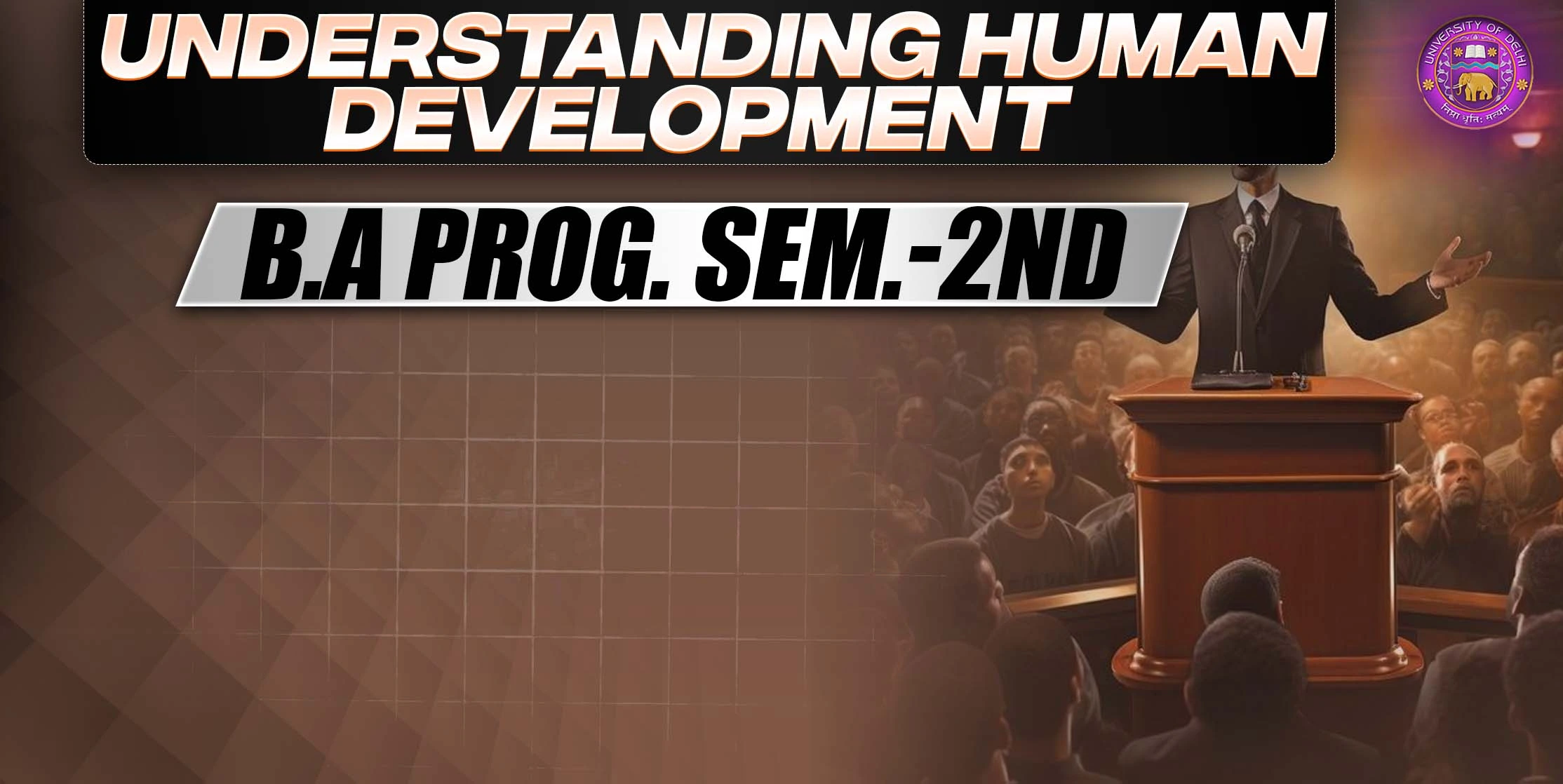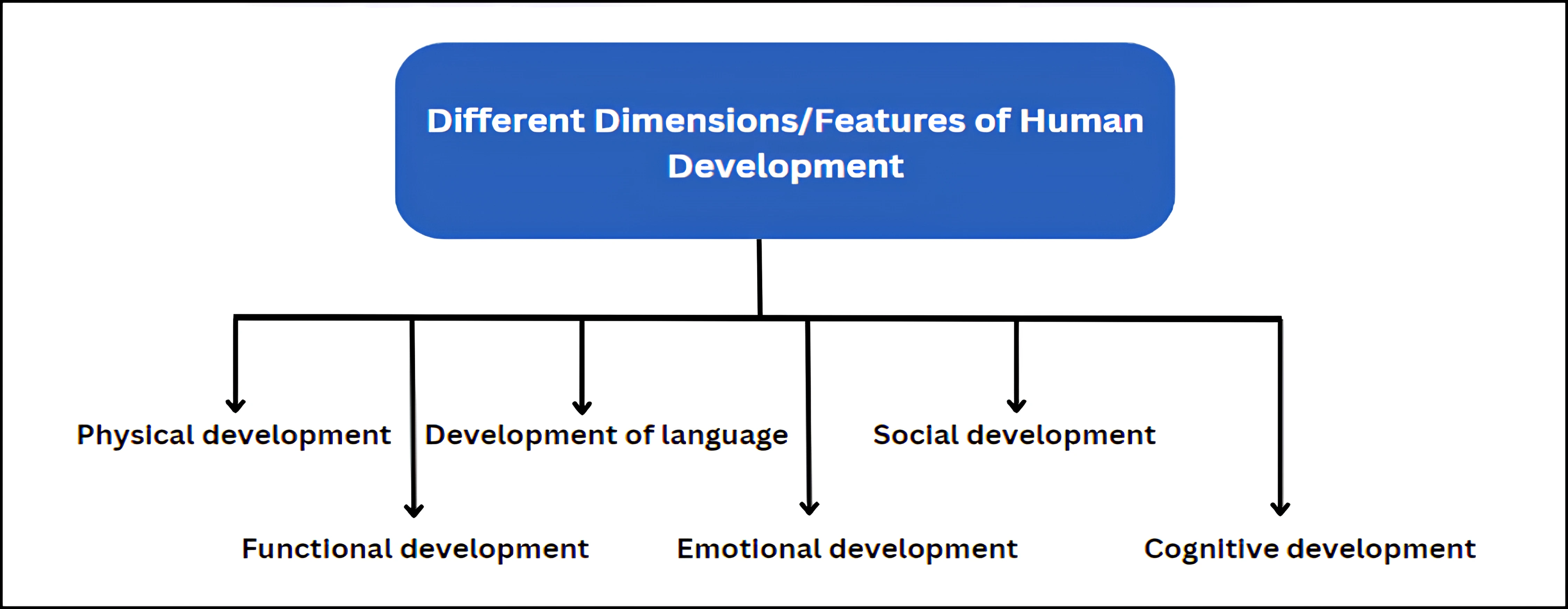
Get in Touch
We will get back to you within 24 hours.
Welcome to MVS Blog

Answer – Introduction
Human development is a lifelong process characterized by physical, cognitive, social, and emotional changes that individuals experience as they grow and mature. These changes occur in distinct stages or levels, each with unique characteristics and developmental tasks. Understanding the stages of human development provides valuable insights into how individuals develop, learn, and navigate various challenges and transitions throughout their lives.
Stages (levels) of human development:
To understand the development of human beings, psychologists have divided the life cycle into the following stages:-

1. Pregnancy/fetal stage (stage before birth):
The period from conception to the birth of a child is called pregnancy or gestation. Pregnancy is the period during which a fetus develops inside a woman's uterus. On average, pregnancy lasts about 40 weeks, or about 9 months. Pregnancy is generally measured in weeks rather than months. The health of the mother has a significant impact on the health of the fetus. The health and development of the fetus depends on the health, lifestyle and diet of the mother.
2. Infancy
Infancy is listed from birth to 18 months of age. This stage of the child is considered as the "formation period of the child". During infancy, children go through several developmental milestones and acquire new skills. These milestones can vary slightly from child to child. Babies gradually gain control of their muscles and learn to roll over, sit up, crawl, and eventually walk. During this time the child's social, emotional, cognitive and language development takes place.
3. Childhood
Middle childhood covers approximately 3 to 11 years of age. During this stage, children experience continued cognitive development, including improved problem-solving abilities and increased academic skills. Social relationships become more complex, and children begin to develop a stronger sense of identity.
4. Adolescence
Traditionally, the period between 13 to 19 years was considered as the period of adolescence, but on the basis of changing times and many studies on adolescents, Hurlock has divided adolescence into three parts-
This stage is also called "Puberty period". Early adolescence in boys begins about a year later than in girls. That is why girls develop more rapidly in the beginning. The period of early adolescence of boys is also somewhat shorter due to which boys appear to be less mature than girls of their age.
5. Adulthood
1. Early Adulthood: This stage is the next stage after adolescence. Early adulthood is considered to be the age from 20 to 40 years. Many types of expectations are made from the person of this stage. As if-
(a) To become financially independent by choosing a profession.
(b) To start a family by getting married.
(c) To fulfill his responsibilities towards the society by being a good citizen.
In this stage, the person himself becomes employed to fulfill the needs and desires of his life. He starts participating in various social functions to establish his reputation in the society. At this time he chooses such friends who are related to the same thoughts, interests and occupation rather than being of the same age.Gradually the person understands his responsibilities and tries to fulfill them properly. For these reasons, early adulthood is also called the 'Settling Down Age'. In early adulthood, the following responsibilities of an adult are considered:-
2. (Middle Adulthood/ Middle Age):
Middle adulthood is considered to be the age of 40 to 59 years. This stage is also called Madhyavastha. This is the stage when due to family responsibilities, a person remains busy in his business and in bringing up the family. Most of the people touch the heights of their business in almost this stage.
In simple words, it is the stage of assessing the successes and failures of life. In this stage, various mental and physical changes begin to occur in adults. By the end of this stage, they start to feel the coming of old age and they start thinking seriously about their responsibilities like children's education, marriage, repaying debts and collecting money for old age.
6. Old age
Old age is an indicator of freedom from fulfilling one's responsibilities in many social environments and approaching the last stage of life. As a result of relaxation of body's interactions in old age, old people become diseased relatively quickly and struggle
with many physical and mental disorders. Many physical and mental changes can be considered as indicators of old age. For example, when people become grandparents or maternal grandparents, then they are considered old or retired people from their workplace are considered old. In many countries, the age of 60-65 years is considered as the age of old age.
Different Dimensions/Features of Human Development

1. Physical development: " This dimension pertains to the growth and maturation of the body, including motor skills, sensory development, and overall physical health. It encompasses aspects such as physical fitness, nutrition, motor coordination, and the body's capacity to function optimally.
2. Functional development: According to the maturity of muscles and nerves, the child's ability to perform various tasks is called functional development. Under this, the child learns to make control and coordination in physical activities, actions and activities of nerves, such as lying on the stomach, sitting, walking etc.
3. Development of language: In general, proper combination of meaningful sounds and sentences is called linguistic development. The child naturally acquires the language by living in his family and society and develops the auditory and oral skills of the language. Under this, the child first learns to cry and shout, babble, gestures and later to construct sentences.
4. Emotional development: Emotional Development: Emotional development refers to the growth of emotional intelligence, self-awareness, and the ability to recognize and manage one's own emotions, as well as understand and empathize with the emotions of others. It involves developing emotional resilience, self-regulation, empathy, and interpersonal skills.
5. Social Development: Social development relates to the development of social skills, interpersonal relationships, and the ability to interact effectively with others. It includes aspects such as communication skills, cooperation, conflict resolution, empathy, cultural awareness, and the development of a sense of belonging and identity within social groups.
6. Cognitive Development: Cognitive development involves the acquisition and refinement of intellectual abilities, thinking processes, and problem-solving skills. It encompasses areas such as language development, memory, attention, perception, reasoning, and the ability to understand and process information.
Conclusion
Human development is a process that goes on continuously from birth to death. Under this process a person acquires many abilities and skills. Human development which includes various dimensions and characteristics such as physical, cognitive, emotional, social, understanding these dimensions helps us to understand the diverse stages and aspects of human development and gives valuable insight into individual differences and potential for personal growth and well-being. meets.
0 Response